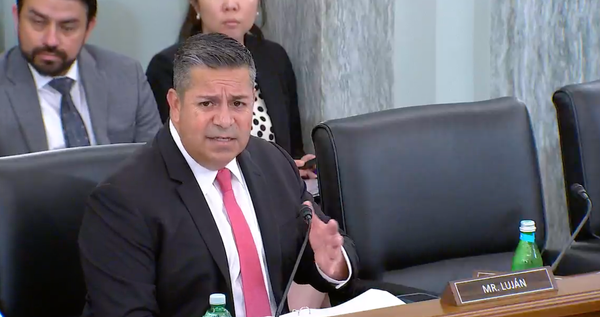NTIA Endorses FCC's Proposed Increase of Broadband Speed Benchmark
The FCC sought comment on upping the definition to 100 * 20 Mbps.

WASHINGTON, January 3, 2024 – The National Telecommunications and Information Administration is backing the Federal Communications Commission’s proposal to alter the definition of broadband to increase the speed benchmark.
The current definition, set in 2015, requires a speed of 25 Megabits per second download and 1 Mbps upload for internet service to be considered broadband, or
high-speed internet. The commission sought comment in November on a proposal to increase that threshold to 100 * 20 Mbps, in addition to using more data sources in its assessment of broadband availability in the U.S.
NTIA officials met with commission staff on December 21 to express support for the move, according to an ex parte letter the agency filed last week.
“We support the Commission’s proposal to raise the speed threshold for fixed broadband to 100 Mbps downstream and 20 Mbps upstream,” the agency wrote, saying a higher benchmark would better reflect user needs and bring the standard in line with the Infrastructure Act’s Broadband Equity, Access and Deployment program, which the NTIA is tasked with managing.
That $42.5-billion broadband expansion effort already has a 100 * 20 Mbps benchmark, meaning infrastructure funded by the program will be required to provide at least that speed, and areas currently receiving slower internet will be eligible to be served with BEAD funded infrastructure. Homes and businesses receiving less than the current FCC benchmark of 25 * 3 Mbps are given special priority.
The commission is required by section 706 of the Telecommunications Act of 1996 to conduct annual assessments of the “availability of advanced telecommunications capability to all Americans.” In the same November notice of inquiry, the FCC proposed adding a number of new data points to that assessment, including latency, affordability, adoption, and equitable access among minority groups. That will partly be facilitated by the commission’s new Broadband Data Collection database, which has more precise information from internet providers.
The NTIA endorsed all of that as well, writing: “The Section 706 inquiry has the potential to serve as an important indicator of our nation’s progress toward achieving digital equity, and it will be best equipped to do so if it examines the available data on a wide range of challenges in this field.”
The agency added that it is working on a project with the Census Bureau to estimate broadband adoption in small geographic areas.
Industry response
In comments to the commission, broadband industry groups expressed broad support for the 100 * 20 Mbps benchmark, but some disagreed on the commission’s proposed long-term goal of 1 Gbps * 500 Mbps – something the NTIA did not touch on.
CTIA, a trade group representing wireless providers, wrote that while the commission noted some situations in which users require more than 100 * 20 Mbps, “none of these justifies a fixed broadband benchmark above 100 * 20 Mbps, even as a long-term goal.” That’s a view shared by WISPA, an association of wireless broadband providers.
NTCA, which represents small and rural broadband providers, advocated for an even higher long-term goal, but did not specify an exact number. Trade group INCOMPAS pushed for setting the download benchmark to 1 Gbps now, rather than in the future.
USTelecom, another broadband industry group, said the long-term 1 Gbps * 500 Mbps goal would be impractical, as the only technology capable of providing those speeds is fiber-optic cable.
“There are locations where deployment of fiber is not practical now and may never be,” the group wrote in comments to the Commission.
CTIA also opposed adding non-deployment metrics like adoption and affordability to the 706 inquiry, arguing that reporting requirements for existing Universal Service Fund programs are a better venue for assessing them.










